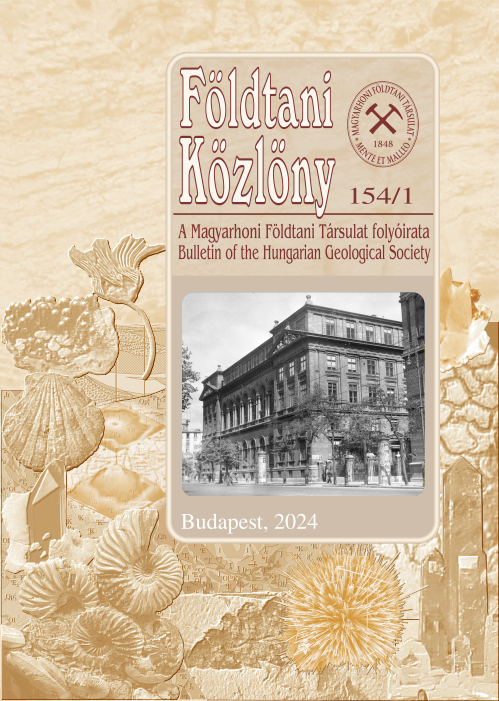A morphometric analysis of the fault pattern of the Bakony Mountains: some tectonic geomorphological implications
Abstract
The unique tectonic setting of the Pannonian Basin was recognised as early as 1900. In particular, the evolution and
geologic characteristics of the outcropping pre-Cenozoic mountain ranges have been subject to detailed studies and
prolonged discussions. Among these efforts, the Transdanubian Range occupies an important position because its wellpreserved outcrops, (which are rare in the Pannonian Basin) make it possible to collect direct measurements of the fault
striations and fault plane orientations. The tectonic position of the Transdanubian Range provides the key to the link up of the
Carpathian– Pannonian system to the Eastern Alps. It is interpreted as the uppermost thrust sheet of the Alpine nappe system
that was emplaced in the Cretaceous.
A key advance was made by the pioneering approach of MÉSZÁROS, who compiled a 1:100,000-scale structural and
economic-geologic map of large parts of the Transdanubian Range in 1982 (northern and southern Bakony and Balaton
Highlands). This detailed work puts a major emphasis on the mapping of structural features, distinguishing their sense of
movement and constraining the time of their activity. Unfortunately, the map itself has never been published. However, parts
of the map which were important for mining activities taking place at that time were produced in a summary paper (MÉSZÁROS
1983). This study focuses on the correlation of the fault pattern with geomorphologic features. Integration of the original map
of 1982 into a GIS environment and subsequent tectonic geomorphological analysis reveals the close relationship between
tectonics and the landscape evolution of the Bakony Mountains (PÉCSI 1987). A selected set of study areas provides results for
further characterisation of the structural elements.
A total of five hundred faults were subdivided and, segmented into two basic groups: one group consists of faults with
spatially-related geomorphologic surface expression and the other group comprises tectonic elements not directly related to
characteristic morphological features. These groups were further analysed on the basis of the properties assigned to them by
MÉSZÁROS (direction of fault movement and age); the orientation patterns were compared to fault datasets from different
authors for the whole of Transdanubia.
Orientation analysis of various classes of faults reveals a surprisingly uniform angular distribution: the overall orientation
pattern in the Bakony shows a slight but significant difference with respect to the general orientation in Transdanubia.
Azimuthal distribution of the faults mapped by MÉSZÁROS is bimodal and can be interpreted as orthorhombic sets of faults.
Additionally, the strike of geomorphologically significant faults differs from the strike direction of geomorphologically nonvisible faults by 15 to 20 degrees.











